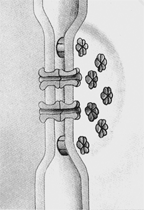The neutralization of toxin molecules by antitoxins accomplishes all of the following except
A. Prevents attachment to specific molecules on the cell surface
B. Inactivates the toxin molecule
C. Lessens the ability of toxins to diffuse through the tissues
D. Increases the activity between toxins and interleukins
E. Masks the toxicity of toxin molecules
Answer: D. Increases the activity between toxins and interleukins
You might also like to view...
Bread making requires yeast, flour and water. Why is yeast used?
A. It makes the bread healthier as yeast is a source of vitamins. B. It makes the bread rise due to the carbon dioxide released during ethanol fermentation. C. It makes the bread rise due to the carbon dioxide released during cellular respiration. D. It makes the bread sour due to lactic acid fermentation. E. It makes the bread crunchy.
Familial adenomatous polyposis coli (APC) is characterized by a small deletion in chromosome 5. In which cells is this deletion present in affected individuals?
A) somatic cells B) germline cells C) colon polyps D) colon epithelial cells E) all cells
In the accompanying figure, what is the role of the structures between the membranes?

a. They provide structure to plant cells.
b. They provide anchorage points between adjacent cells.
c. They allow passage of materials through intercellular spaces.
d. They prevent the passage of materials through intercellular spaces.
e. They allow the transport of small molecules and ions between adjacent cells.
Which of the following is NOT true of DNA-binding proteins?
a. Many are dimers that combine with two sites on the DNA. b. Regulatory proteins often bind inverted repeats on DNA. c. A leucine zipper is a common domain to maintain proper conformation. d. Most bind to DNA in a nonspecific manner.